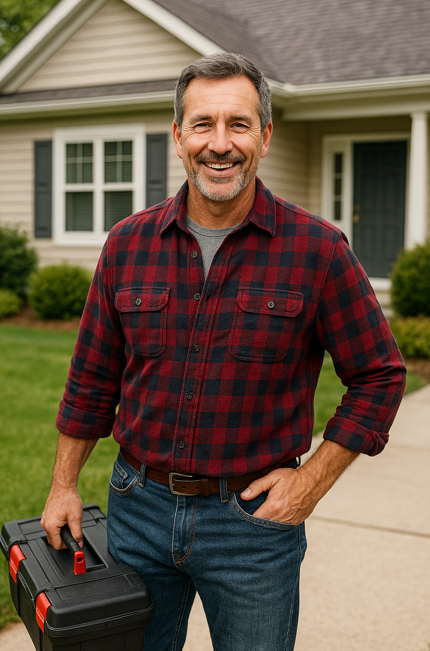1. What Is R‑32, Really?
R‑32, aka difluoromethane, is a next-generation HFC refrigerant—and a single‑component formula, unlike many older blends that mix gases. The simplicity means fewer complications: easier recovery, simpler charging, and more efficient performance. R‑32 has quickly taken over residential and small packaged systems overseas and is gaining U.S. traction under new standards.
2. The Efficiency Edge
Let’s talk performance—R‑32 systems regularly post SEER2 ratings in the 16–19 range, a solid 10–15% better efficiency over R‑410A systems rated at a similar capacity and price. That adds up to real monthly savings. According to the U.S. Department of Energy, the improved heat transfer properties and pressure–temperature curve of R‑32 give it a consistent edge.
But don't just take my word—heat-transfer metrics show R‑32 boils at a lower temperature, which improves cycle efficiency and reduces compressor workload. Over a cooling season, that means you cut kilowatt-hours while keeping the house cool as a cucumber. 😎
3. Environmental Benefits: Lowering Your Footprint
The global Global Warming Potential (GWP) of R‑32 is just ~675—far below R‑410A’s ~2,088. When you blend that with energy savings, you cut greenhouse emissions significantly. The EPA’s SNAP program confirms that what goes into R‑32 means less climate impact overall.
That’s good news for your conscience and your wallet: some utilities are offering rebates for low‑GWP equipment, recognizing the long-term climate benefits.
4. Safety & Handling: The A2L Truth
Here’s the deal—R‑32 is classified as A2L, meaning mildly flammable. Before you panic, know it's far from dangerous in everyday settings. It’s not fuel-grade; it doesn’t ignite on contact. What it does mean is better airflow, leak detection, and certified techs for installation and maintenance.
ASHRAE safety protocols require ventilation, leak sensors, torque‑specified connections, and updated tech training. That stuff keeps you safe. Your service tech should be R‑32 certified—ask before sign-off on the install.
5. Regulations, Policies & Compliance
Global climate deals like the Kigali Amendment have pushed for low-GWP refrigerants, and domestic policy (AIM Act, updated SNAP lists) aligns with that shift. R‑32 is now a federally accepted replacement under the EPA and can be used in residential packaged systems marketed in the U.S.
State-level incentives add fuel to the adoption fire. California’s CARB has its own regs requiring GWP thresholds—R‑32 clears them. So you’re getting something that’s legal, future-proof, and often rebate-eligible—no guesswork.
6. Comparing R‑32 to R‑410A—and What It Means for You
Here’s a direct comparison:
| Feature | R‑410A | R‑32 |
|---|---|---|
| Components | Blend of two gases | Single component |
| GWP | ~2,088 | ~675 |
| SEER2 Performance | Baseline | +10–15% efficiency |
| A2L Safety Rating | A1 (non-flammable) | A2L (mildly flammable) |
| Recycling Complexity | Moderate | Easier |
| Future Regulation Risk | High (phase-out) | Low |
Bottom line: R‑32 systems run cooler, greener, and deliver more bang per buck.
7. Cost Breakdown & Long-Term Value
Let’s get financial:
-
Upfront cost: R‑32 packaged units cost about the same as standard R‑410A models.
-
Energy savings: At $0.15/kWh, expect $100–$150/year in savings.
-
Rebates: Federal tax credits (up to $600), plus $200–$500 from local utilities via ENERGY STAR's Rebate Finder.
-
Payback window: In 3–5 years for most performance tiers.
-
Lifetime ROI: Over a 15-year window, you're looking at $2,000–$3,000 in total savings compared to R‑410A units.
That’s more cooling, less climate impact, and a sweet ROI—exactly what smart shoppers like you want.
8. Installer Considerations & Certification
Don’t skimp on installation. Make sure to:
-
Hire Section 608 certified or equivalent R‑32 trained techs.
-
Verify code compliance (NEC, ASHRAE, UL standards).
-
Allow leak testing with halide or electronic detectors.
-
Ensure proper ventilation and sensor placement.
Document everything—especially the Product Identification Number (PIN) and SEER2 rating—you want that paperwork for rebates and warranties.
9. FAQ: What Homeowners Ask Most
Q: Is R‑32 going to be banned like R‑410A?
A: No. R‑32 meets current standards and is unlikely to face phase-out due to its low GWP and efficient performance.
Q: I heard it’s flammable. Should I worry?
A: A2L classification means mild flammability—it's safe under normal use with competent installation and leak detection. Routine maintenance further minimizes risk.
Q: What if R‑32 leaks?
A: Leaks reduce efficiency and can diminish capacity—not an emergency. A certified tech can recover and recharge the system while you stay cool.
Q: Are there supply issues?
A: Not anymore. R‑32 is available globally and production is increasing. Shortages are rare, and systems ship ready-to-go.
10. Final Takeaways & Next Steps
-
R‑32 delivers serious performance improvements—you get more efficiency, lower emissions, and cooler reliability.
-
Safety is straightforward—as long as certified techs follow protocols, you’re safe.
-
It’s legal, primed for rebates, and built for 2025 and beyond.
-
Your homework now:
-
Choose R‑32 packaged systems—check SEER2, AHRI listing, and rebate eligibility.
-
Hire certified installers who test for leaks and log everything.
-
Clean filters quarterly, schedule annual tune-ups, and expect 15–20 years of solid performance.
-
Shop R‑32 Residential Packaged Air Conditioners
Looking for reliable models that meet the latest energy standards, come R‑32 ready, and qualify for rebates? Browse our premium selection here:







